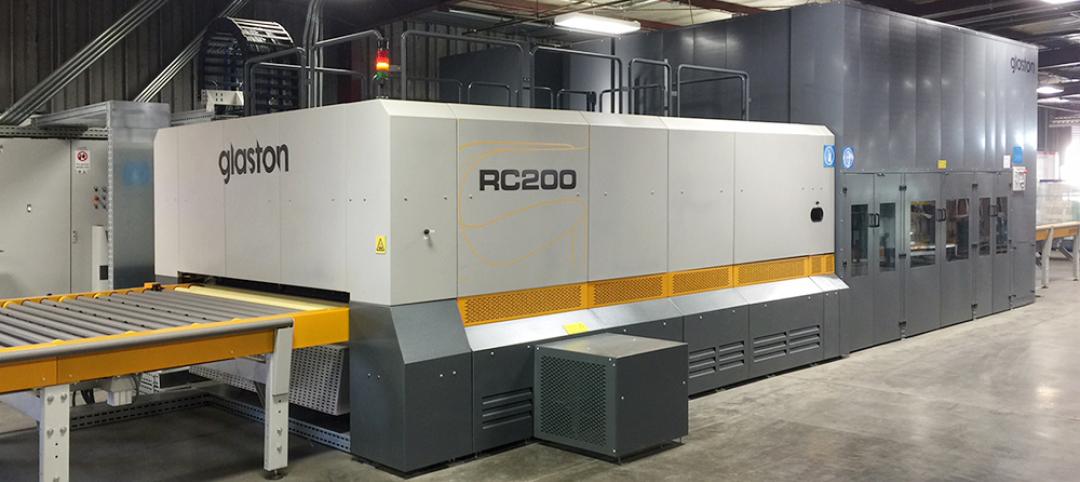Wired glass was the only fire rated glass (FRG) product available for over 100 years. In traditional wired glass, the embedded wires hold annealed glass in place during the fire test to achieve a fire rating. While the wires give the illusion of increased strength and impact resistance, the opposite is true. Wired glass is not safety glazing. The wires actually weaken the glass, making it half as strong as ordinary window glass. Wired glass breaks easily on human impact, exposing razor sharp wires that can trap a victim’s limb in the opening and increase the severity of the injury. Alarmingly, wired glass is the most commonly used FRG product found in educational facilities, leading to over 2,500 wired glass impact injuries in schools every year. In 1977, the Consumer Product Safety Commission (CPSC) enacted a federal safety glazing standard (16 CFR 1201) to protect people from injury due to accidental impact with glazing. The building codes apply the CPSC standard to require that glazing used in hazardous locations, such as doors and sidelites, must meet minimum Category I and II impact standards, depending on the size of the glazing panel. Smaller glazing panels in sizes up to 1296 square inches must meet the Category I impact test of 150 ft. lbs. Larger glazing panels must meet the higher Category II standard impact test of 400 ft. lbs. of impact resistance. At the time the federal standard was enacted, wired glass manufacturers alleged they lacked the technology make a fire rated product that could meet the new CPSC standards. Since wired glass was the only FRG product available in 1977, the IBC granted wired glass a temporary exemption from meeting the CPSC standard. This exemption allowed wired glass used in fire assemblies to meet a lower ANSI Z97.1 impact standard of 100 ft. lbs., which the CPSC acknowledged was inadequate to protect anyone except children under five. For more information, click on the link below.
Related Stories
Energy-Efficient Design | Feb 18, 2016
How to make a ‘pure’ glass sphere
Creating a 25-story energy-generating globe for Expo 2017 in Kazakhstan put Adrian Smith + Gordon Gill Architecture to the test.
Sponsored | Glass and Glazing | Feb 8, 2016
The State of the Fire Rated Glass Industry
After a strong 2015, demand for fire resistive glass continues to grow
Sponsored | Glass and Glazing | Jan 27, 2016
Saving Energy & Birds at the Boulevard Club
The Boulevard Club is a century old structure in Toronto which needed an expansion. The windows facing Lake Ontario needed to be bird friendly in order to reduce the number of window collisions. In this case, AviProtek E bird friendly low-e coated acid-etched glass was the right choice.
Sponsored | Glass and Glazing | Dec 11, 2015
Glass industry gives back during the holidays
The holiday season is generally a time when individuals and companies ramp up their charitable giving. The glass industry is no different.
Curtain Wall | Nov 4, 2015
Curved glass curtains will give Washington, D.C., office building more views and floor space
Around 900 fluted glass panes will cover 2050 M Street, which will contain television studios for CBS.
Glass and Glazing | Oct 19, 2015
Safti First completes $6 million expansion in U.S. manufacturing operations
Being the first fully vertically-integrated fire rated glazing USA-manufacturer enables Safti First to provide the fastest lead times, most competitive prices and best coordination
Glass and Glazing | Sep 10, 2015
As commercial construction booms, glass supply is lagging demand
Manufacturers are frantically restarting plants they mothballed during the economic downturn.
BIM and Information Technology | Aug 28, 2015
MIT researchers develop 3D printer that produces intricate glass structures
The machine uses molten glass as its “ink,” contained in a “kiln cartridge” that heats up at 1,900 degrees until it is molten and pliable.
Sponsored | Glass and Glazing | Aug 17, 2015
Specialty tempered glass??
Tempered glass is an excellent choice for large expanses of glass that maximize clear views while providing significant wind load and thermal stress resistance.














